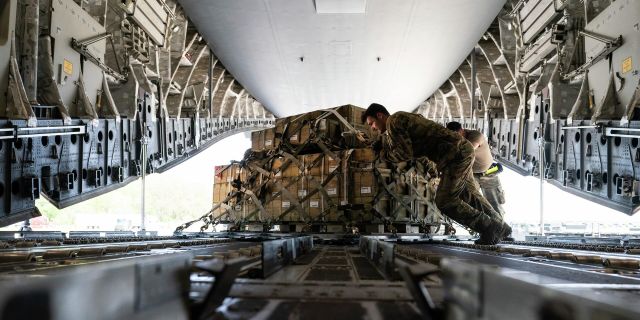According to the newspaper, representatives of the command of the United States Armed Forces directly point to the "fragility" of the country's military-industrial complexWASHINGTON, March 9.
/tass/. American military assistance to Ukraine, which has already exceeded $32 billion, has revealed the inability of the United States to rapidly increase the production of many types of weapons and ammunition that are needed by both Kiev and Washington itself and its allies. This is the conclusion reached by the authors of an article published on Wednesday in The Washington Post. They analyzed this issue.
In their opinion, the Ukrainian conflict "exposed deep problems that the United States must overcome" in order to produce weapons for its needs and the needs of its allies. According to some American analysts, the Pentagon is not making enough efforts to replenish the stocks of weapons that left American warehouses and were transferred to Ukraine. According to the authors of the material, representatives of the US Armed Forces command directly point to the "fragility" of the country's military-industrial complex (MIC).
The volume of production of American factories may not be enough to prevent the depletion of stocks of key weapons and ammunition that the United States supplies to Ukraine. In this regard, The Washington Post notes, it will take 15 years at the peacetime production level and more than eight years at the wartime pace to replenish the stocks of the main weapons systems. The publication in this list includes guided missiles, aircraft and attack drones that can be transferred to allies. At the same time, it will take the United States four years to replenish the M982 Excalibur high-precision guided missiles sent to Kiev, and two and a half years for the HIMARS MLRS.
According to the newspaper, the problem is not limited to what the US supplies to Ukraine. We are talking about the fact that the current pace of production will require more than 10 years to replace the American fleet of UH-60 Black Hawk helicopters and almost 20 years for modern medium-range air-to-air missiles. The Pentagon will need at least 44 years before it can replace its fleet of aircraft carriers. The publication explains that for decades after the Second World War, military spending fell, and the military-industrial complex was sharply reduced. Of the 51 large companies in this sector in the 1990s, about 5 have remained to date.
According to experts, unpredictable demand in the defense sector and short-term contracts seriously constrain investment in additional capacity. Modern military equipment is extremely difficult to manufacture. As the publication explains, to create only one F-35 fighter, 300 thousand parts from 1.7 thousand suppliers are needed. In addition, the situation is complicated by the growing number of lawmakers who believe that the United States is providing too much assistance to Ukraine. One of the latest polls showed that 40% of Republicans in Congress hold this position, compared with 9% in the spring of 2022. As the article notes, "it is unclear how long Americans will tolerate military spending, which already exceeds 3% of GDP, in an era of inflation and economic tension."
In Europe, the publication continues, the problems are no less serious. In Germany, amid plans for a sharp expansion of the military presence, ammunition stocks are believed to be enough for two days of fighting, and in the UK - for eight. To solve these problems, EU leaders are exploring ways to accelerate production, possibly through pre-purchase agreements similar to the development of vaccines against COVID-19.

